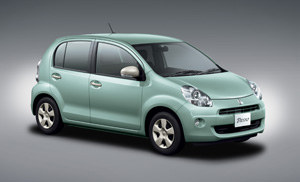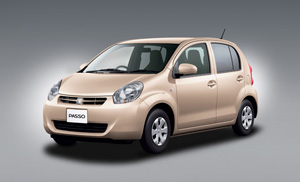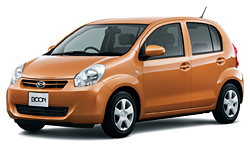New Toyota Passo & Daihatsu Boon launched
Toyota and Daihatsu recently announced the launch of the co-developed Toyota Passo and Daihatsu Boon, available for sale in the Japanese Domestic Market with immediate effect. In separate, but simultaneously released press statements, both Toyota and Daihatsu credited each other’s role as partners in developing the Passo/Boon. There is no mention of a role by Perodua, who was said to have been an equal partner in the development of the first generation Passo, which became the Perodua Myvi in our shores.


Toyota Passo + Hana (left) and Toyota Passo (right)
Like the outgoing Passo/Boon, the new one will also be available with the choice of a 1.0-litre and 1.3-litre engine though both are new. The 1.0-litre variant is powered by the three-cylinder 1KR-FE engine replacing the existing EJ-VE three-potter. Power from the old EJ engine is up by 10hp to 68hp, produced at 6,000rpm, while torque has also been upped from 88Nm to 92Nm @ 3,600rpm. Available in both FWD and AWD layout, the former actually meets Japanese emission standards for 2015.
The bigger 1.3-litre version features the 1NR-FE four-banger Dual DVVT (or Dual VVTi, depending on badge) motor replacing the single DVVT K3-VE engine. Hike in output here is as impressive as that in the 1.0-litre models, with 86hp @ 6,000rpm jumping to 94hp @ 6,000rpm, and 116Nm @ 3,200rpm leaping to 121Nm @ 4,000rpm. The 1.3 model is available only in FWD layout. All models feature Continuously Variable Transmission with column shifter as standard without option.
Compared to the Myvi’s dimensions, the new Passo/Boon is notably shorter in length (3,750mm vs 3,640mm) and height (1,550mm vs 1,535), but identical in width (1,665mm). There is a slightly longer version of the Toyota Passo known as the Passo + Hana, which measures an extra 10mm longer than the standard Passo.
Though there has been no mention of any involvement by Perodua in the Passo/Boon’s development, this is now a possible and likely candidate for a future replacement model of the Myvi. Don’t expect anything this year though, because Perodua’s strategy is to introduce an all-new model once every two years. Thus far, they have been consistent – the Myvi came in 2005, Viva in 2007 and Alza in 2009. Anything in between, not counting the CBU Nautica, are just facelifts.
Following that schedule, the next big Perodua launch is set to take place in 2011. We won’t be surprised to see this fella coming out to replace the Myvi, which would be a six-year old model by then – the ripe old age to be pensioned off.
No mention of any involvement by Perodua.
KON
Pictures: Official Toyota & Daihatsu press release, Autoworld file picture.
























